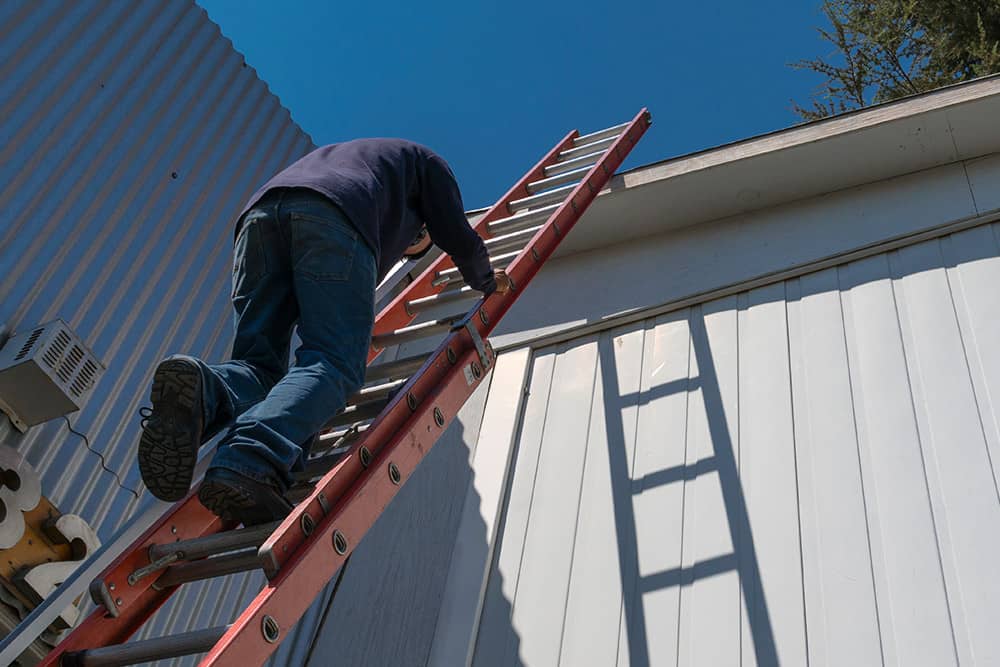
Falls from height account for an average of 34 fatalities and 581 major injuries annually in the UK. Where work at height occurs, it presents a significant level of risk to both employers and those at the sharp end, doing the work.
Due to the level of risk involved, the Work at Height Regulations 2005 were introduced to help ensure safety when conducting this type of work. Complying with this legislation is a legal duty, but it will also protect your organisation and colleagues from disaster. In this blog post, we will explore the regulations in detail and provide a complete guide to staying safe while working at height.
What Are the Working at Height Regulations?
The Work at Height Regulations 2005 are essentially a set of rules established to help ensure the safety of individuals working at height. These regulations provide protection from potential hazards such as falls from height, electrocution, hazardous materials exposure and many other risks.
They also ensure that workers are provided with the necessary safety equipment, such as protective clothing and respirators, to enable them to work safely.
These working at height rules cover various aspects of working safely, from planning the task, to getting the right information, to checking the equipment and ensuring that it is working properly. It is important for employers to comply with these regulations to reduce the likelihood of an accident happening on their premises and keep employees safe.
Everyone working at height should be familiar with these regulations and take any measures necessary to prevent accidents.
What are the consequences of non-compliance?
Not complying with Work at Height Regulations 2005 can have disastrous consequences. Work-related deaths, injuries, near misses and ill health can all be caused by not taking the relevant safety measures while working in areas of height.
Non-compliance can also mean hefty fines or even imprisonment for some employers, especially when negligence has led to a work-related death. Besides the potential legal repercussions of non-compliance, an organisation’s reputation could also be damaged through increased public awareness of any death or injury related incidents, making it more difficult for future investments and hiring.
What is working at height?
Working at height is the term used to describe working with potential fall risks above ground level. It doesn’t just refer to working up a ladder, but any situation in which working from an elevated surface presents a risk of falling.
Working at height is very common in many industries such as construction, maintenance, cleaning, and telecommunications. It is a high-risk activity that requires proper safety measures and equipment to prevent accidents.
Examples of working at height include working:
- On scaffolding
- On a ladder
- On a raised surface below ground
- Above a deep excavation
- Working on the roof of a building

Who do the regulations apply to?
These regulations apply to all individuals and businesses employing those working at a height of two metres or more, regardless of the industry they are working in. Employers have the principal responsibility for ensuring that all working at height activities are adequately planned, supervised and performed by competent people with appropriate equipment.
It’s also important to note that working at height should only be done when there isn’t any safer alternative available. The working at height rules provide a framework of flexible requirements for building an effective health and safety management system which, when effectively implemented, can reduce the risk associated with working in such potentially dangerous environments.
What are the main requirements of the regulations?
Depending on where the work is taking place, the rules may differ slightly, but there are some core requirements that must be adhered to.
Employer Requirements
Under the law, employers must:
- Conduct risk assessments of any work at height work, and ensure it is properly controlled
- Provide suitable information, instruction and training to understand how to work safely
- Ensure that all work at height is properly planned and organised and that suitable measures to prevent falls are taken prior to the activity starting
- Provide adequate training and instruction to employees on how to work safely at heights, including knowledge of relevant laws, regulations and codes of practice
- Use appropriate collective protection measures such as guardrails, handrails, safety nets or scaffolding where appropriate to ensure the safety of employees working at height
- Provide suitable, properly maintained and regularly inspected work at height equipment
All ladders used for work at height should be securely fastened and placed on a stable surface. The ladder should extend at least one metre above the landing area to avoid overreaching
Safety is paramount when working at heights – following these rules for working at height is essential for every worker.
Employee Requirements
All personnel involved in work at height have a legal duty to work with their employers to protect themselves and anybody else from harm when they are carrying out work at height tasks.
Ways to do so include:
- Follow any training that has been provided
- Conduct any pre-use checks before using access equipment
- Use personal protective equipment, such as helmets or harnesses, as trained
- Report anything believed to be unsafe
With adequate preparation and a commitment to follow protocols, working at height can be conducted safely and responsibly to keep everyone who is involved in the task safe.
Where can you find more information on the Working at Height Regulations 2005
If you’re looking for comprehensive information on the Working at Height Regulations 2005, the government provides official resources on the subject. The Health & Safety Executive provides an extensive list of FAQs, guidance documents, updates and other resources related to the regulations.
However, if you need more official advice on how these regulations apply to your particular business or environment, it is essential that you contact a specialist occupational health and safety advisor who can guide you through every step of the process.
Ensure Your Operations are Protected from Work at Height Hazards
The Working at Height Regulations 2005 are in place to protect both employees and employers and prevent accidents and fatalities when working at height.
The main requirements in the regulations are that those who control the work environment must do everything reasonably practicable to prevent risks, while those carrying out the work must take reasonable care for their own safety and that of others around them. Training is essential to ensure compliance and you can find online Working at Height courses at Human Focus. The courses give you the knowledge to ensure the safety of everyone within your organisation when they’re working at height.



















































































































































































































































































































































































































































































































































































































































































































































